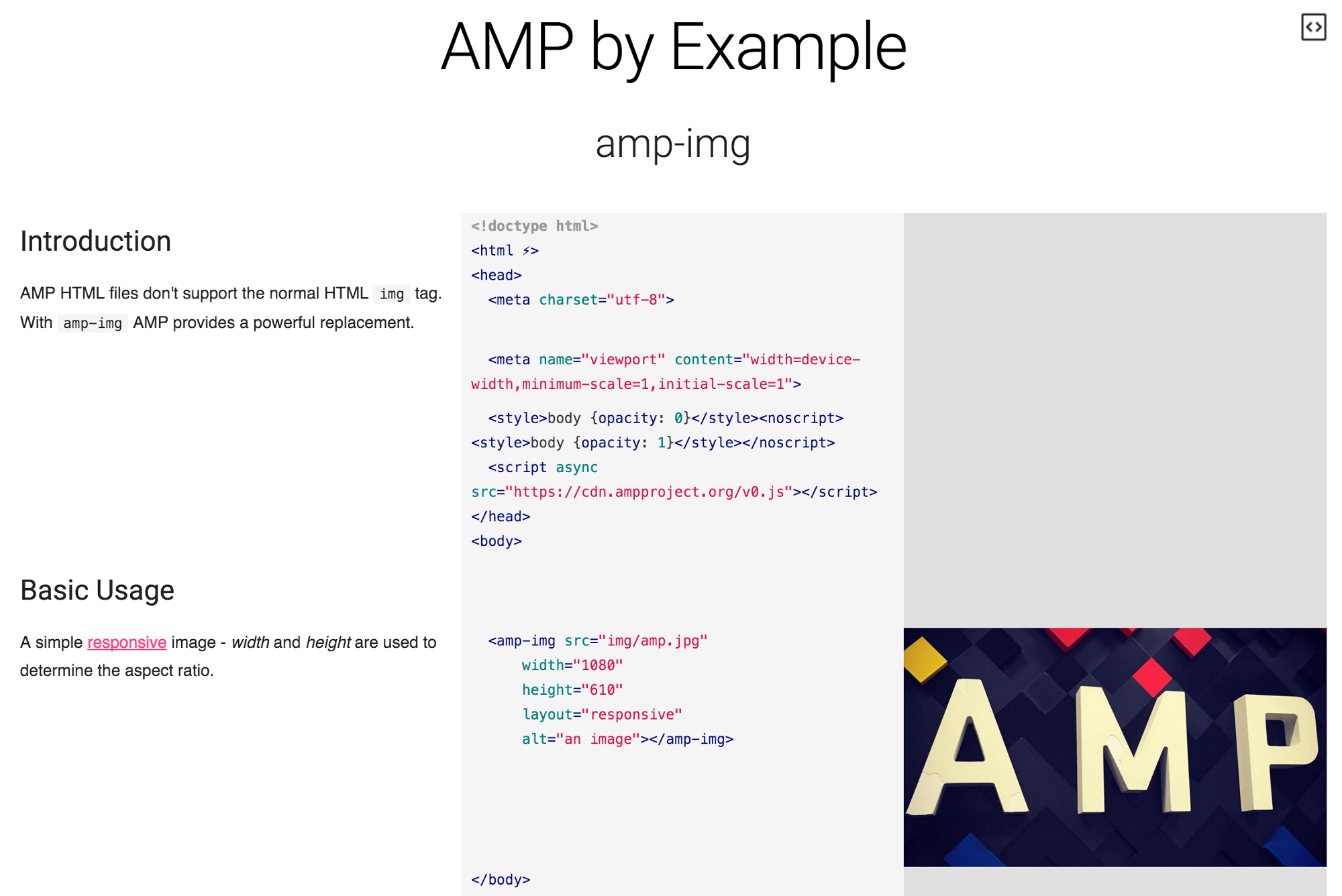#AMP by Example
ampbyexample.com gives you a hands-on introduction to Accelerated Mobile Pages based on code and live samples. Learn how to create websites with AMP and how to effectively make use of the different AMP components.
In case we are missing any examples, feel free to let us know. Have you got any good examples you would like to contribute? Read on, it’s very easy to add new examples.
- Fork the repository.
- Install NodeJS.
- Setup the repository.
$ git clone https://github.com/YOUR_GITHUB_NAME/amp-by-example.git
$ cd amp-by-example
$ npm i
$ sudo npm i -g gulp
Create a new example with gulp create. Set the title via --name or -n and add it to an existing section using --dest or -d:
$ gulp create --name amp-img --dest src/20_Components
$ vim src/20_Components/amp-img.html
For more descriptive example names including whitespaces use quotes:
$ gulp create --name 'Hello World' --dest src/10_Introduction
$ vim src/10_Introduction/Hello_World.html
If you want to create a new sample category, use --category or -c. Prefix the name with two digits followed by a space to define the sort order:
$ gulp create --name amp-awesome --category "50 More Awesomeness"
$ vim src/50_More_Awesomeness/amp-awesome.html
Run validate to validate all examples against AMP spec:
$ gulp validate
Run build to generate all examples:
$ gulp build
While working on an example you can start a local webserver with auto-reload by running gulp:
$ gulp
$ open http://localhost:8000/
Some components, like this one require an additional server endpoint.
Use HTML comments (<!-- ... -->) to document your sample code:
<!-- Look! Images in AMP. -->
<amp-img src="img/image1.jpg" width=200 height=100 layout=responsive></amp-img>This works for elements in the header as well:
<head>
<!-- Import the amp-youtube component -->
<script async custom-element="amp-youtube" src="https://cdn.ampproject.org/v0/amp-youtube-0.1.js"></script>
...
</head>Every HTML comment creates a separate example section spanning the following HTML element.
<!-- This comment spans the whole following div including the two images -->
<div>
<amp-img src="img/image1.jpg" width=200 height=100 layout=responsive></amp-img>
<amp-img src="img/image2.jpg" width=200 height=100 layout=responsive></amp-img>
</div>Nested comments are not supported:
<!-- A comment -->
<div>
<!-- This does not work -->
<amp-img src="img/image1.jpg" width=200 height=100 layout=responsive></amp-img>
</div>You can use markdown to format your documentation:
<!--
A simple [responsive](https://www.ampproject.org/docs/guides/responsive/control_layout.html)
image - *width* and *height* are used to determine the aspect ratio.
-->
<amp-img src="img/image1.jpg" width=200 height=100 layout=responsive></amp-img>If your sample is using an experimental component, you can add a metadata section (<!--- ... --->) with the json variables experiment and component, this will skip its validation and add an experimental note with instructions to your sample:
<!---{
"experiment": true,
"component": "amp-experimenal-component"
}--->If your sample looks better with a single column layout, you can disable the code and preview columns adding the following flags to your sample file:
<!---{
"hideCode": true,
"hidePreview": true
}--->You can mark samples as drafts if they are still work-in-progress. This means the samples won't show up in the start page.
<!---{
"draft": true
}--->Please see the CONTRIBUTING file for information on contributing to amp-by-example.
AMP by Example is made by the AMP Project, and is licensed under the Apache License, Version 2.0.
